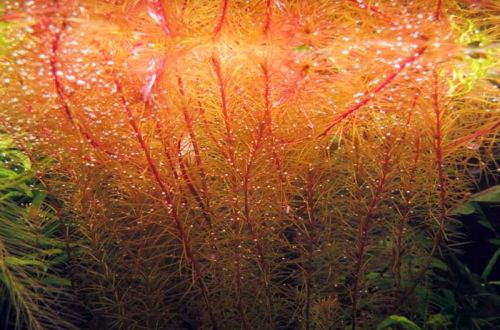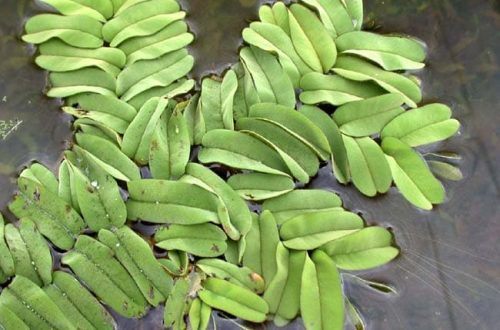
Ricciocarpus floating
Ricciocarpus floating, scientific name Ricciocarpos natans. In nature, it is found on almost all continents from temperate to tropical climatic zones. It grows along the coastline on the surface of stagnant water bodies, such as lakes, swamps, backwaters of rivers. Often found together with accumulations of duckweed and Riccia.
A sprout is a series of interconnected leaves that together form a shape resembling a heart or a fan. The leaves are dark green in color, about 1 cm in size, separated from above by a longitudinal groove. The surface is covered with small villi. The underside is dark greyish-brown to black-violet. From the base of the sprout departs a dense bundle similar to the roots, which in diameter noticeably exceeds the leaves. Thanks to the “roots”, each sprout is located at a certain distance from each other, not allowing them to completely cover the surface of the water, as happens, for example, with duckweed.
Ricciocarpus floating needs nutrient-rich water. Generally, a mature aquarium or pond stocked with fish and other aquatic life is a great place to grow. Fish waste becomes fertilizer for plants.
The content is simple. This moss is not sensitive to the hydrochemical composition of water and is able to grow in a wide range of temperatures. Moderate to strong lighting is recommended.





